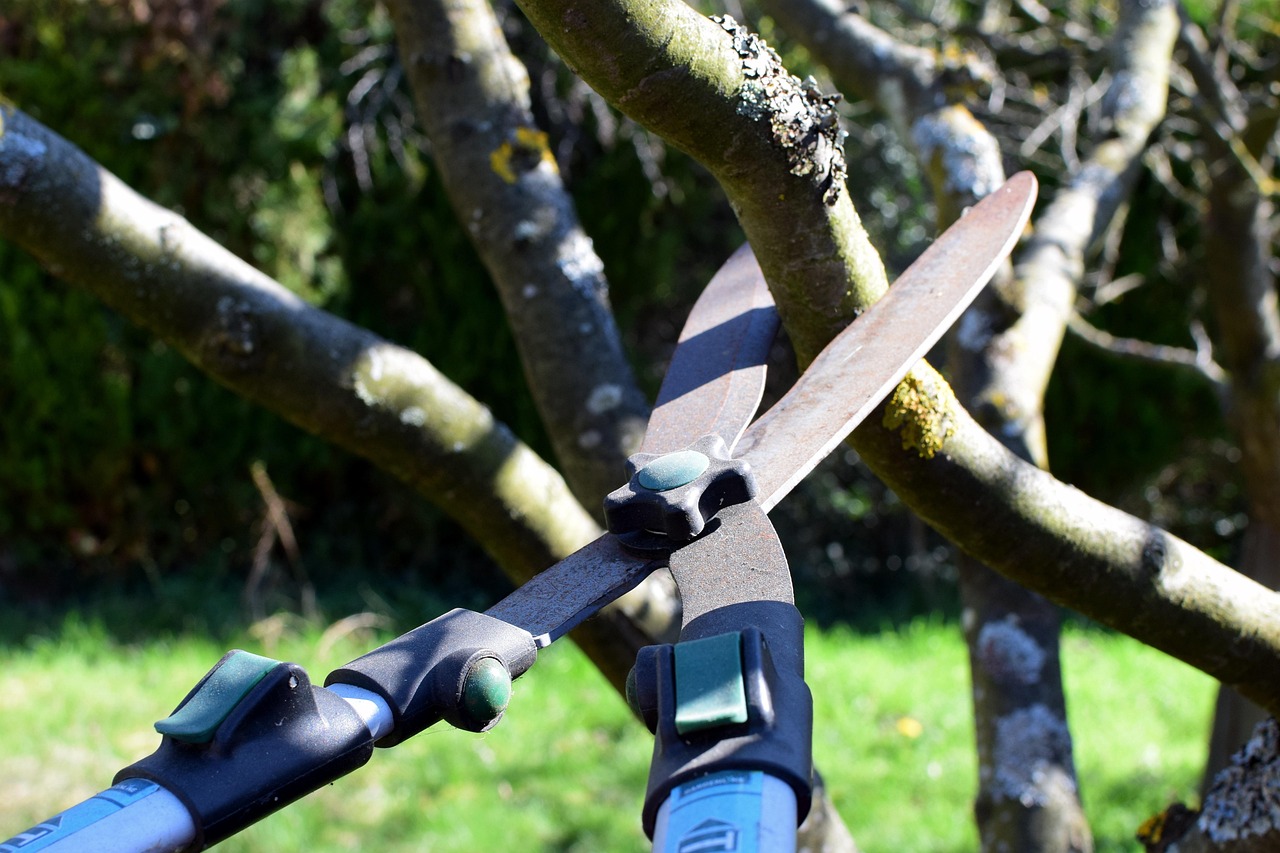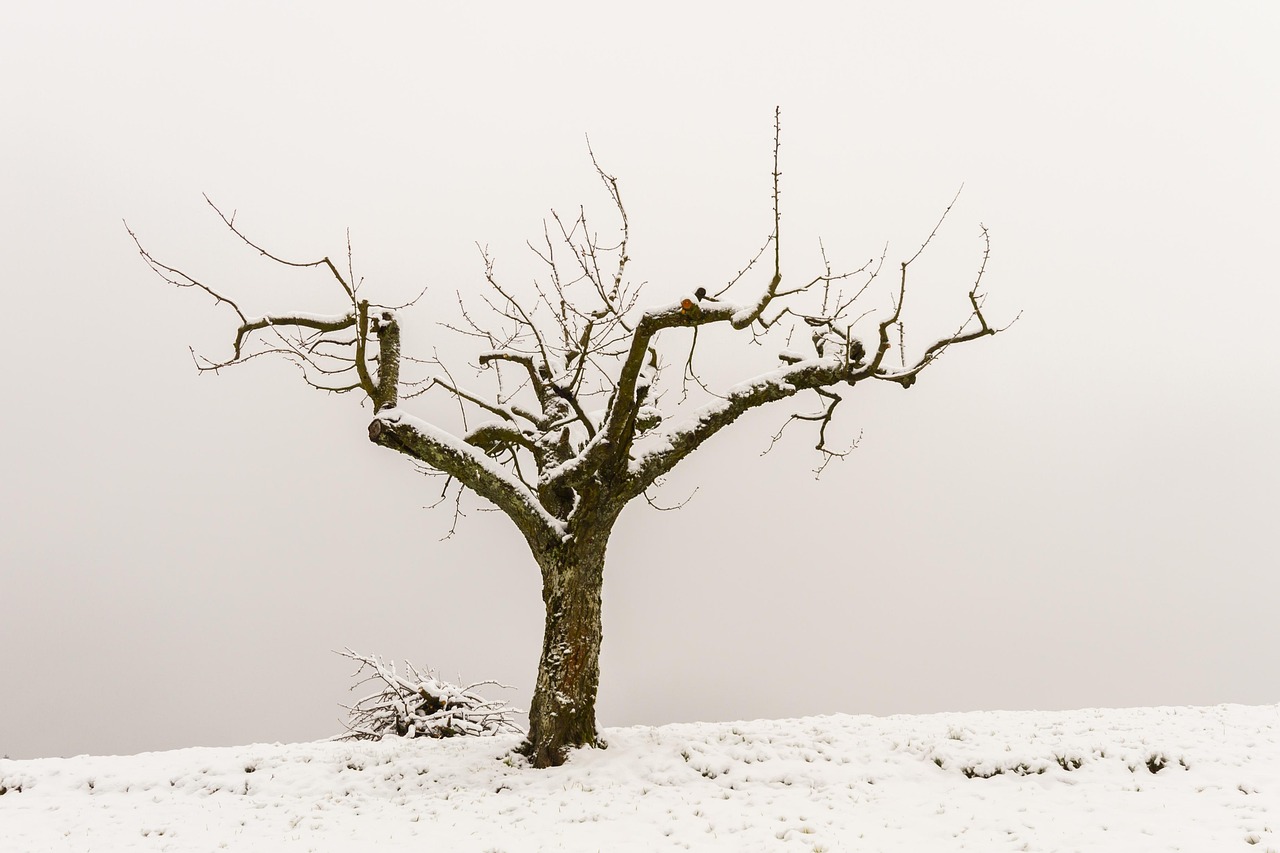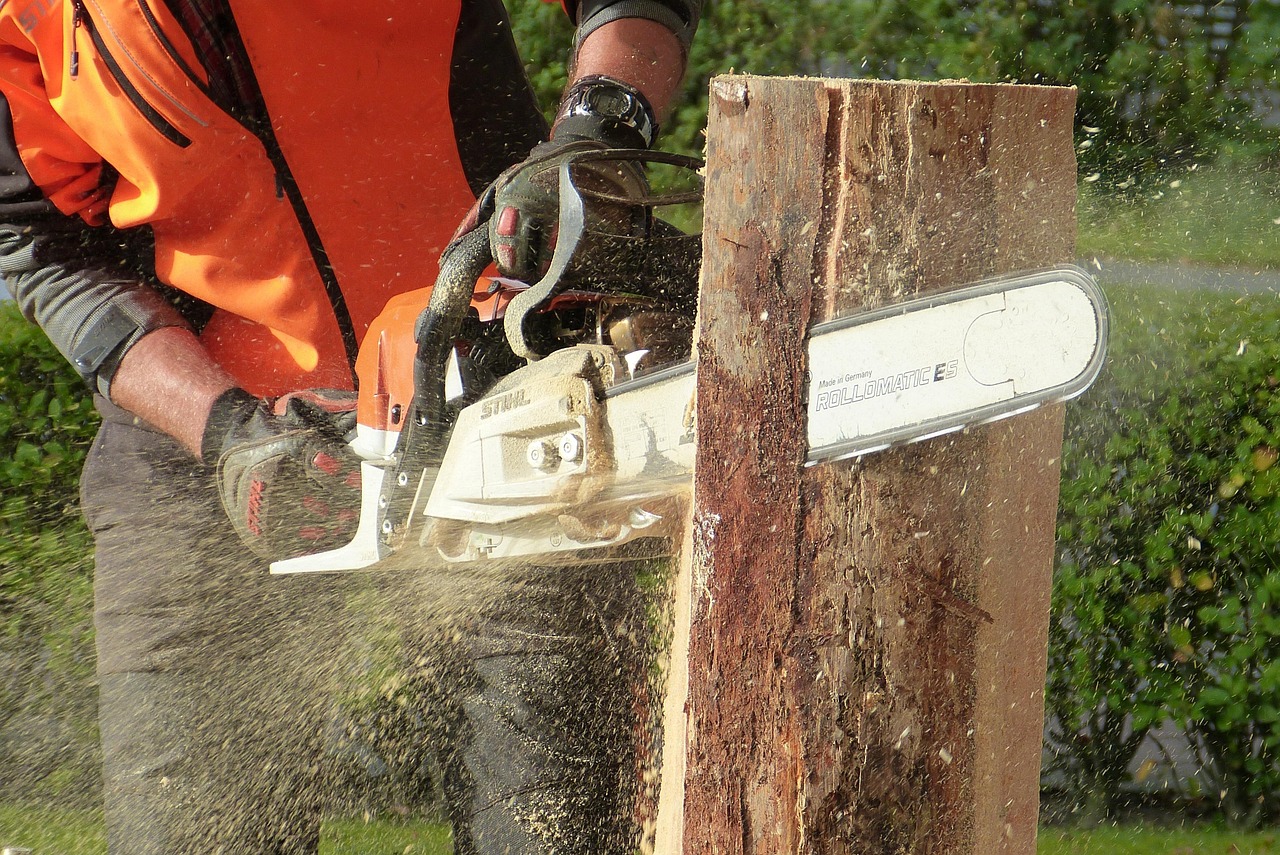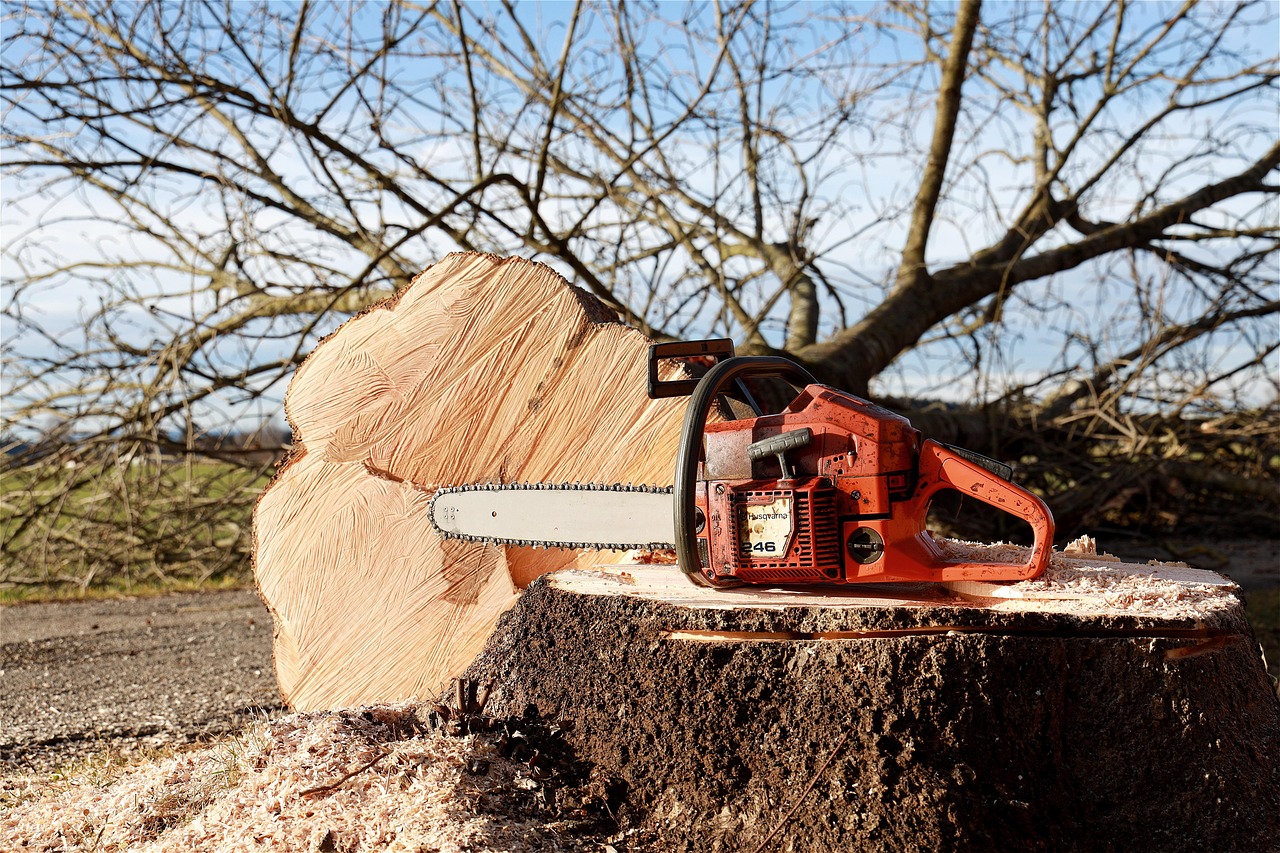Tree pruning enhances the aesthetic appeal and curb appeal of a property by promoting healthy growth, improving structure, and removing unsightly branches. This practice can transform a yard, making it more inviting and visually appealing while also supporting tree health.
Tree pruning is an essential aspect of landscape maintenance. It involves selectively removing certain parts of a tree, such as branches or buds, to improve its structure and appearance. Not only does pruning help maintain the health of trees, but it also plays a significant role in enhancing the overall beauty of outdoor spaces. Well-pruned trees can increase property value and create a welcoming atmosphere for both homeowners and visitors.

The aesthetics of a landscape can greatly influence curb appeal. Curb appeal refers to the attractiveness of a property from the street. It is crucial for homeowners looking to sell their homes or simply create a pleasant environment. Pruning trees effectively can contribute significantly to this appeal. A well-maintained tree showcases the property’s care and attention to detail.
Benefits of Tree Pruning
Pruning offers several benefits that go beyond mere aesthetics. Understanding these advantages can motivate homeowners to include tree care in their routine maintenance. Here are some key benefits:
- Improved Tree Health: Regular pruning removes dead or diseased branches, preventing the spread of pests and diseases.
- Enhanced Growth: Pruning encourages new growth by allowing more sunlight to reach the inner branches of the tree.
- Better Structure: Proper pruning helps shape trees, making them more structurally sound and less likely to suffer from storm damage.
- Aesthetics: A well-pruned tree looks tidy and intentional, enhancing the overall landscape design.
- Increased Safety: Removing low-hanging branches can prevent hazards for pedestrians and vehicles.
In addition to these benefits, pruning can also help manage the size of trees, keeping them within desired limits. This is especially important for trees planted near homes or power lines. Controlled growth reduces the risk of damage during storms and allows for better light penetration into gardens and yards.

When to Prune Trees
The timing of tree pruning is critical for achieving optimal results. Different species of trees have different growth cycles, so understanding when to prune is essential. Here are some general guidelines:
| Tree Type | Best Time to Prune | Notes |
|---|---|---|
| Deciduous Trees | Late Winter to Early Spring | Prune before new growth starts. |
| Evergreen Trees | Late Spring to Early Summer | Avoid heavy pruning in late summer. |
| Flowering Trees | After Blooming | Prune to shape without sacrificing blooms. |
| Fruit Trees | Late Winter | Encourages healthy fruit production. |
Pruning at the right time allows trees to heal quickly and encourages vigorous new growth. For example, dormant pruning in late winter minimizes sap loss in deciduous trees and helps prevent stress during the growing season. Conversely, pruning flowering trees immediately after they bloom protects next year’s flowers.
Tools for Tree Pruning
Having the right tools for tree pruning is essential to ensure clean cuts and minimize damage to the tree. Here are some commonly used tools:

- Hand Pruners: Ideal for smaller branches up to ¾ inch in diameter.
- Loppers: Used for branches thicker than ¾ inch; they provide leverage for cutting.
- Saws: Needed for larger branches; use a pruning saw or chainsaw depending on size.
- Pole Pruners: Useful for reaching high branches without a ladder.
Each tool serves a specific purpose, making it easier to achieve desired results without harming the tree. Proper maintenance of these tools is also important. Sharp blades make cleaner cuts, promoting faster healing for the tree.
In summary, tree pruning is an integral part of maintaining both the health of the trees and the beauty of the landscape. By understanding its benefits, timing, and necessary tools, homeowners can enhance their properties’ curb appeal and enjoyment of their outdoor spaces.
Techniques for Effective Tree Pruning
To achieve the best results in tree pruning, it is essential to use proper techniques. Each method serves a specific purpose and ensures that the tree remains healthy while enhancing its aesthetic appeal. Understanding these techniques can help homeowners make informed decisions when pruning their trees.

Types of Pruning Cuts
Pruning can be categorized into different types of cuts, each tailored to specific goals. Knowing these cuts can help you determine the best approach for your trees:
- Thinning Cuts: These cuts remove entire branches back to their point of origin. This technique improves air circulation and light penetration within the tree’s canopy.
- Heading Cuts: These involve cutting back a branch to a bud or lateral branch. Heading cuts promote bushier growth and are often used to shape the tree.
- Reduction Cuts: Similar to thinning cuts, reduction cuts shorten a branch while maintaining its connection to the tree. This technique helps reduce the overall size of the tree without compromising its structure.
- Cleaning Cuts: These cuts remove dead, damaged, or diseased branches. Cleaning cuts are essential for maintaining tree health and preventing the spread of disease.
Using the right type of cut ensures that the tree not only looks better but also grows healthier. Each cut influences the tree’s growth pattern and overall vitality.
Pruning Techniques Based on Tree Type
Different tree species require different pruning techniques. Here are some tips based on common types of trees:
| Tree Type | Pruning Technique | Special Considerations |
|---|---|---|
| Maple Trees | Prune in late winter to early spring. | Avoid heavy pruning during sap flow. |
| Oak Trees | Prune in late summer. | Minimize pruning during spring to prevent oak wilt disease. |
| Pine Trees | Thin out older branches regularly. | Avoid heavy pruning as it can lead to stress. |
| Citrus Trees | Prune after fruiting season. | Focus on removing dead or crossing branches. |
Understanding these species-specific techniques allows homeowners to tailor their approach effectively. Each tree type has unique growth habits, so adapting techniques is crucial for successful pruning.
Common Mistakes to Avoid When Pruning
While pruning can significantly enhance tree health and aesthetics, there are common pitfalls that can lead to negative outcomes. Avoiding these mistakes can ensure effective and safe pruning:
- Over-Pruning: Removing too many branches can stress the tree. It is essential to strike a balance and prune only what is necessary.
- Improper Timing: Pruning at the wrong time of year can disrupt growth cycles. Always consider the specific needs of each tree species.
- Using Dull Tools: Dull tools can cause ragged cuts that invite disease. Always ensure tools are sharp and well-maintained before starting.
- Neglecting Safety: Pruning high branches without proper safety equipment can lead to accidents. Always use harnesses or hire professionals when necessary.
Avoiding these common mistakes will lead to healthier trees and a more attractive landscape. Taking time to learn about proper techniques pays off in the long run.
The Role of Professional Arborists
While many homeowners choose to prune their trees themselves, hiring a professional arborist can provide several advantages. Professional arborists have specialized training and knowledge that can benefit your trees in multiple ways:
- Expertise: Arborists understand various tree species and their specific needs. They are trained to recognize diseases and pests effectively.
- Safety: Professionals have the right equipment and experience to safely prune large trees or those near power lines.
- Health Assessment: Arborists can assess the overall health of your trees and recommend additional care, such as fertilization or pest management.
- Time-Saving: Hiring a professional saves time, allowing homeowners to focus on other important tasks.
Investing in professional pruning services can enhance the health and beauty of your trees while providing peace of mind for homeowners concerned about safety and effectiveness.
Caring for Trees After Pruning
After pruning, it is crucial to care for trees properly to aid recovery and promote healthy growth. Here are some post-pruning care tips:
- Watering: Ensure newly pruned trees receive adequate water, especially during dry spells. Proper hydration supports healing.
- Avoid Fertilizing Immediately: Wait a few months after pruning before fertilizing to allow the tree to focus on healing.
- Monitor for Pests: Keep an eye out for pests or signs of disease after pruning, as wounds can attract these threats.
- Crown Care: Allow natural growth patterns by not forcing additional shaping immediately after pruning; let the tree recover first.
Caring for trees after pruning is just as important as the pruning itself. Proper post-care ensures that trees continue to thrive and contribute positively to the landscape.
Understanding Different Tree Species and Their Pruning Needs
Tree species vary widely in their growth habits and pruning requirements. Knowing the specific needs of different trees can help ensure effective pruning and enhance both aesthetics and health. This section explores several common tree species and their unique characteristics.
Deciduous Trees
Deciduous trees lose their leaves annually, making them a popular choice for many landscapes. These trees typically require pruning during their dormant season to minimize stress and promote healthy growth. Some common deciduous trees include:
- Maple Trees: Prune in late winter to early spring. Focus on removing dead or crossing branches to improve structure.
- Oak Trees: Best pruned in late summer to avoid disease. Limit cuts to maintain the tree’s natural shape.
- Birch Trees: Should be pruned in late summer or early fall. They can bleed sap if pruned in early spring.
Deciduous trees benefit from regular pruning to enhance their form and allow light to penetrate the canopy. Proper timing is crucial to maintain their health and beauty.
Evergreen Trees
Evergreen trees keep their foliage year-round, providing consistent greenery to landscapes. Pruning these trees focuses on shaping and controlling growth:
- Pine Trees: Prune in late spring or early summer. Thinning out older branches helps maintain airflow and encourages healthy new growth.
- Cypress Trees: Can be pruned throughout the year but best done in the spring. Avoid heavy pruning, as it can lead to stress.
- Spruce Trees: Pruning is recommended in early spring before new growth appears. Focus on removing dead branches and achieving a desirable shape.
Evergreens need less frequent pruning than deciduous trees, but periodic maintenance is still essential for promoting healthy growth and maintaining their shape.
Flowering Trees
Flowering trees add vibrant colors and beauty to landscapes. Their pruning needs depend on their blooming cycles:
- Cherry Trees: Prune immediately after flowering to avoid cutting off next year’s blooms. Focus on shaping and removing any dead branches.
- Dogwood Trees: Best pruned after flowering. Remove any weak or crossing branches to improve health and aesthetics.
- Magnolia Trees: Prune after blooming to maintain shape and remove dead wood. Avoid heavy pruning as it may affect flowering.
Timely pruning enhances flowering potential while ensuring the health of these beautiful trees.
The Importance of Tree Health Assessments
Regular health assessments are vital for maintaining tree vigor and aesthetics. Homeowners should routinely check their trees for signs of illness or stress:
- Leaf Coloration: Yellowing leaves can indicate nutrient deficiencies or water stress.
- Bark Condition: Cracks, peeling, or unusual growths on the bark may signal disease or pest infestations.
- Branch Structure: Weak or broken branches may require immediate attention to prevent safety hazards.
Performing health assessments helps identify issues early, allowing for timely intervention. Consulting with an arborist can provide additional insights into tree health and care strategies.
Pest and Disease Management in Pruning
Pests and diseases can severely impact tree health. Understanding how to manage these threats during the pruning process is essential for maintaining the beauty and vitality of your landscape:
Common Tree Pests
A variety of pests can affect trees, leading to damage if not managed properly. Some common pests include:
- Aphids: Small insects that feed on tree sap, causing leaves to curl and yellow.
- Borers: Insects that tunnel into branches, weakening the structure of the tree.
- Caterpillars: Larvae of moths that can defoliate trees quickly if present in large numbers.
Regular inspections during pruning can help identify these pests early. Using organic pesticides or encouraging beneficial insects can help manage infestations effectively.
Common Tree Diseases
Trees are also susceptible to various diseases that can affect their health and appearance. Here are a few common diseases:
- Root Rot: Caused by overwatering or poor drainage, leading to tree decline.
- Powdery Mildew: A fungal disease that appears as a white powdery substance on leaves, affecting photosynthesis.
- Canker Diseases: Result from fungal infections that create sunken areas on the bark, potentially girdling the tree.
Pest and disease management is crucial when pruning. Proper techniques, such as cleaning tools between cuts, can help prevent the spread of infections. Consulting with a professional arborist for severe cases is advisable.
The Role of Mulching in Tree Care
Mulching around trees provides numerous benefits that support healthy growth after pruning. Applying mulch properly helps retain moisture, suppress weeds, and regulate soil temperature:
- Mulch Type: Organic mulches, like wood chips or shredded bark, decompose over time, adding nutrients to the soil.
- Application Depth: A layer of 2-4 inches is ideal for moisture retention without suffocating the roots.
- Avoiding Mulch Volcanoes: Keep mulch away from the trunk to prevent rot; apply it in a donut shape around the base instead.
Incorporating mulching into tree care routines can significantly enhance tree health and resilience, especially after pruning activities.
Additional Considerations for Tree Pruning
Aside from the techniques and care discussed, there are additional factors to consider when pruning trees to enhance their aesthetic appeal and overall health. Understanding these aspects can further improve your tree management strategy.
Seasonal Changes and Their Impact
The seasons play a critical role in determining the best times for tree pruning. Each season brings specific challenges and opportunities for tree care:
- Spring: As trees begin to leaf out, it’s essential to prune before the new growth starts. This is the time when trees are most vulnerable to stress.
- Summer: Pruning during the summer helps control growth and shape trees, but it can also expose them to sunscald. Focus on removing excess growth without compromising the tree’s health.
- Fall: Pruning in the fall can prepare trees for winter, but it can also make them susceptible to cold damage if not done correctly.
- Winter: Dormant pruning during winter is often ideal as it minimizes sap loss and reduces the chances of pest infestations.
Being mindful of seasonal changes allows homeowners to tailor their pruning practices effectively, aligning with the natural growth cycles of their trees.
The Environmental Impact of Pruning
Tree pruning not only benefits individual trees but also plays a significant role in the broader ecosystem. Healthy trees contribute to air quality, provide habitat for wildlife, and help manage stormwater. Here are some environmental considerations:
- Carbon Sequestration: Healthy trees absorb carbon dioxide, helping mitigate climate change.
- Biodiversity Support: Well-maintained trees provide habitats for various wildlife species, promoting biodiversity.
- Soil Health: Healthy trees contribute to soil stability and fertility through leaf litter and root systems.
Pruning practices that prioritize tree health not only enhance aesthetics but also support overall environmental well-being.
Community Involvement and Education
Community efforts can significantly impact tree health and urban landscapes. Engaging in community tree care programs or educational workshops can foster a culture of care and awareness. Here are some ways to get involved:
- Join Local Arborist Groups: Many communities have organizations dedicated to tree care. Participating in these groups can provide valuable knowledge and hands-on experience.
- Volunteer for Tree Planting Events: Help plant new trees in your community while learning about proper planting and care techniques.
- Attend Workshops: Look for local workshops focused on tree pruning and care to enhance your skills and knowledge.
Community involvement not only benefits individual participants but also contributes to healthier urban forests, improving overall community aesthetics.
Conclusion
Tree pruning is a vital practice that enhances the aesthetic appeal and curb appeal of properties while promoting tree health. Understanding various pruning techniques, the specific needs of different tree species, and the importance of post-pruning care are essential components of effective tree management. Additionally, awareness of seasonal changes, environmental impacts, and community involvement further enriches tree care practices.
By implementing appropriate pruning strategies and maintaining an ongoing commitment to tree health, homeowners can enjoy the beauty and benefits that well-maintained trees provide. Whether through DIY efforts or by collaborating with professional arborists, taking the time to care for trees pays off in improved landscapes and healthier ecosystems.
Ultimately, investing in tree care is an investment in the beauty and sustainability of our shared environment. With proper techniques, tools, and knowledge, anyone can contribute to creating vibrant outdoor spaces that enhance both aesthetics and curb appeal.
